Wade Goeke Interview – Seeing REDD
After our recent Abbey Road feature where we delved into the past, present and future of the world’s biggest and best-known recording studio, it’s time to follow up with an interview with Wade Goeke, founder of Chandler Limited, a company intent on recreating the sound of Abbey Road in hardware that we can all use […]
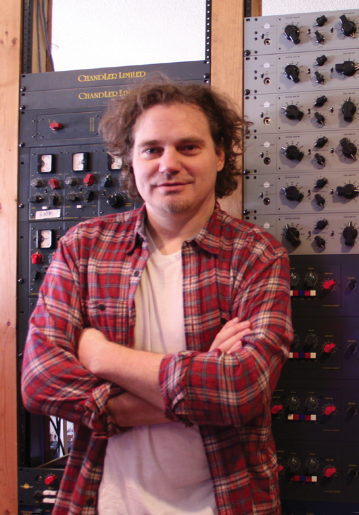
After our recent Abbey Road feature where we delved into the past, present and future of the world’s biggest and best-known recording studio, it’s time to follow up with an interview with Wade Goeke, founder of Chandler Limited, a company intent on recreating the sound of Abbey Road in hardware that we can all use in our studios…
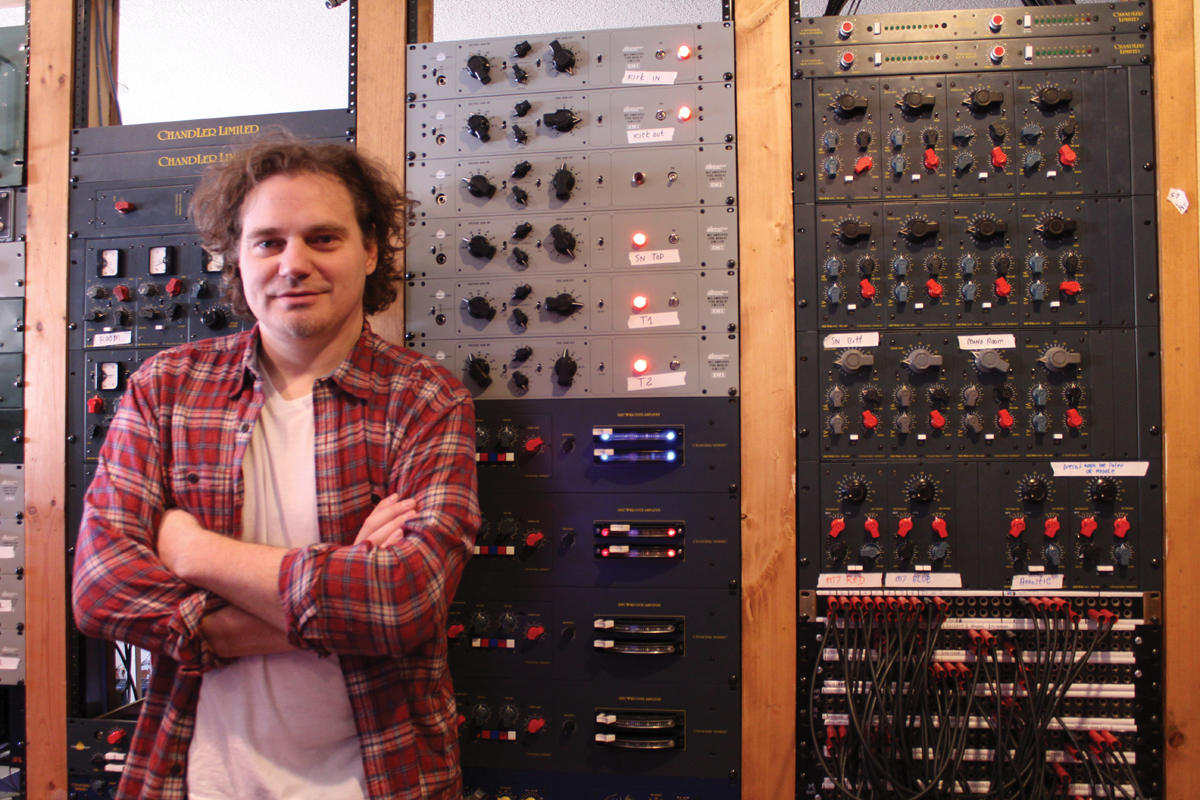
We’ve recently featured Abbey Road, the iconic studios made famous, of course, by The Beatles. It’s a facility that, while steeped in history, is currently busier than ever with blockbuster film soundtracks as well as the world’s biggest bands regularly recording there.
Its continued success is down to the amazing history, the producers and engineers that work there, and ‘the sound’ of the studio. This Abbey Road sound was painstakingly created over the decades by scores of engineers who invented studio techniques and gear to revolutionise recording and shape what we listen to today, and is described in detail in the aformentioned piece – an interview with head of audio products Mirek Styles
The studio gear lives on – in its original state, rebuilt or reconditioned – in many recording facilities around the world and, of course, Abbey Road itself. Its famous sound has also inevitably been recreated in various sample libraries and plug-ins from the likes of Native Instruments and Waves. But only one company has the rights to develop hardware that replicates the gear that has been used in Abbey Road – and that company is Chandler Limited.
After last month’s in-depth Abbey Road report, therefore, it’s appropriate that MusicTech now speaks to the company that’s recreating that iconic studio sound today. Welcome, then, Chandler’s founder Wade Goeke…
MusicTech: Tell us about how Chandler Limited was founded…
Wade Goeke: I guess I would have to say we weren’t really founded. Chandler just grew out of my love of gear and the recording studio. I was always fascinated by gadgets and music, and they just seemed to come together in the form of gear for recording. I started playing guitar in 7th grade and my parents bought me a 4-track in 8th grade, so recording and equipment always went hand in hand with my music.
I remember in 8th grade recording drums in my parents’ living room over a holiday. It sounded terrible! But I was lucky that my parents were very supportive. Since I didn’t go to college they helped me get some recording gear and test equipment, which only made my gear lust worse. Eventually I started making my own units to use in the studio, and began selling them.
It was a pretty organic process. I never sought out to be the biggest, coolest gear company ever if you get my meaning.
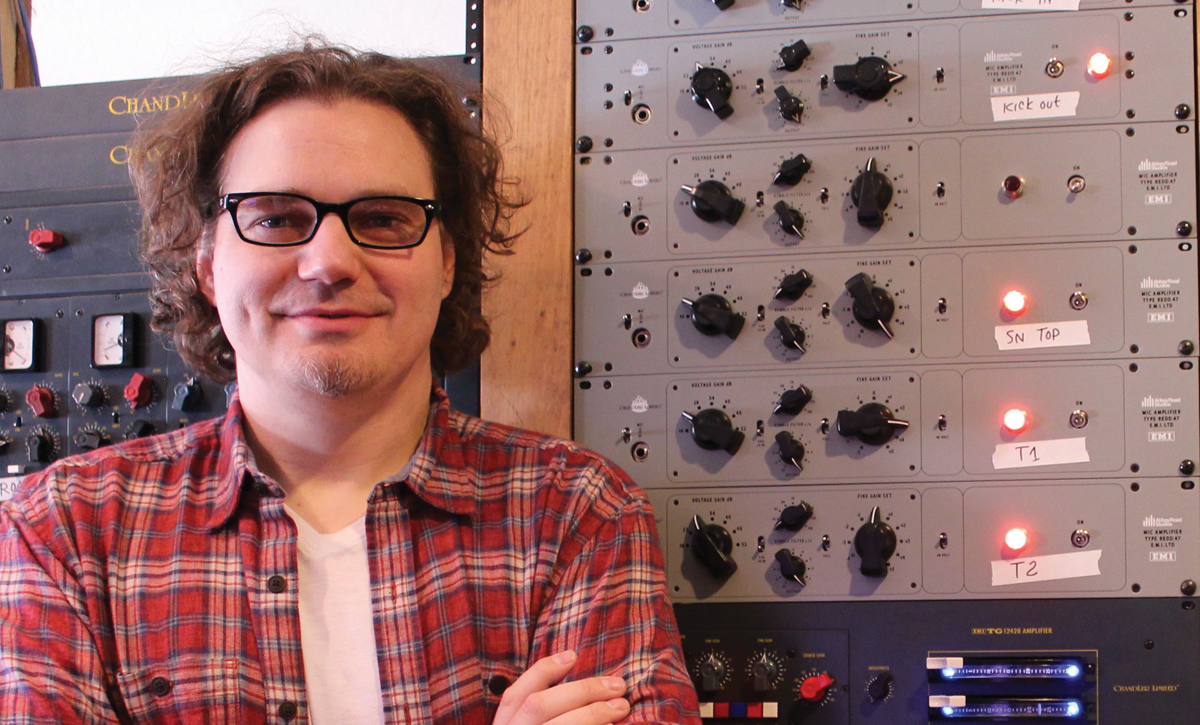
Wade in front of a lot of gear. Just look at all those REDDs!
MT: How did the relationship with Abbey Road start, and how did it develop? And what was your goal at the start?
WG: It was out of sheer luck really. I just mentioned that my parents helped me get some gear – this was back in my early 20s. Luckily, one of the pieces they got me was a pair of EMI TG12413 limiters.
I had always loved the Beatles and Pink Floyd – my parents had Beatles 45s from when they were in high school and college so we listened to them all the time growing up. I knew what EMI was from reading about the Beatles and had read the Complete Beatles Recording Sessions hundreds of times. So when I found out that those were available I said, “Holy crap, is that gear that they used on the The Floyd and the Beatles?” I knew that EMI used to make their own gear.
It was a very personal thing for me, as the sounds of those 45s and all my parents’ classic records were always ringing in my head. When I plugged them in they were everything I had hoped: amazingly coloured and vibrant. I would replicate sounds like the Nowhere Man guitar sound and smile to myself. I thought right then that people would love to be able to use these and someday I should make some.
Eventually I did make some and the first couple ended up in Olympic Studio which was owned by EMI, and the Abbey Road staff were also involved there. So they immediately made their way on to the Abbey Road and EMI radar. They listened to them and liked them, and mentioned that they had been interested in reproducing some of the gear.
So after a fair amount of discussion we worked out a deal. Our original deal expired and we signed a new 10 year contract that includes many new products.
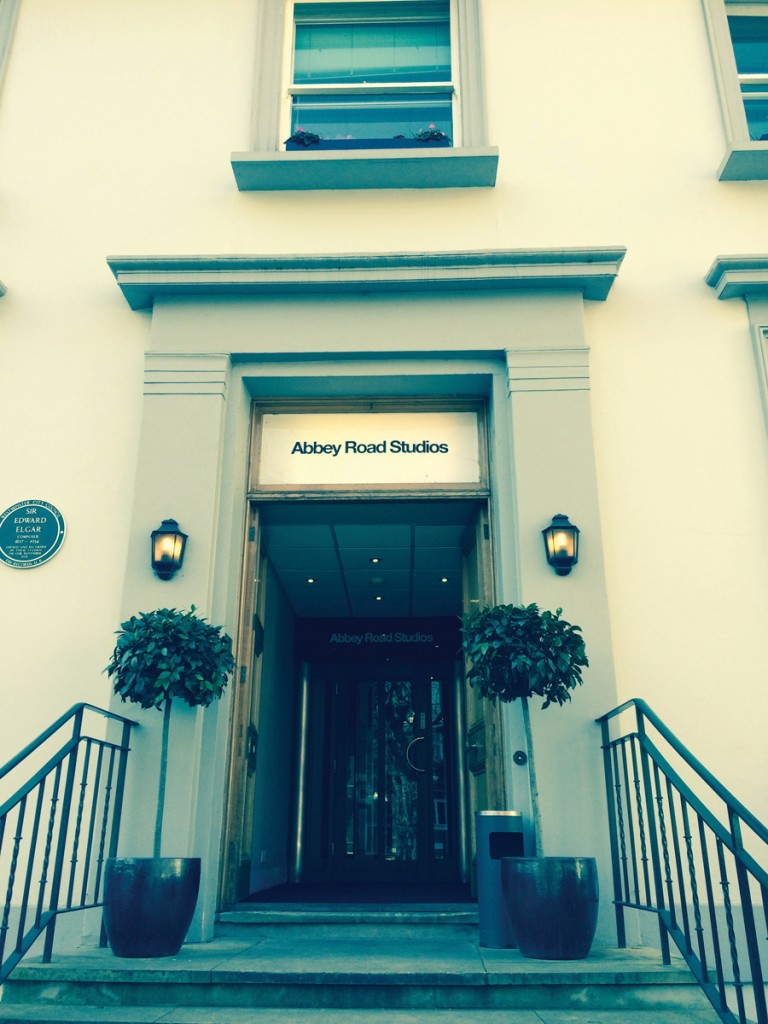
The front door to Abbey Road, just think of how many musical icons have passed through this entryway
MT: What was it about the Abbey Road gear in the first place that attracted you to re-engineer it?
WG: Plain and simple, it reproduced the sounds of classic records I heard in my head. I was already a huge fan of old gear but once I heard the EMI/Abbey Road gear I knew I had found my calling. It clicked with my background and music tastes and was singular in sound, appearance and function.
MT: What are your most successful products?
WG: The TG2 and Germanium preamp have been our biggest sellers. The new REDD.47 is going to be one of our biggest – we’ve had a huge response from it. Items like the Curve Bender, Mini Mixer, Zener Limiter, TG1, and Little Devils also do very well.
MT: Tell us a little about the design process of a typical Abbey Road product.
WG: It varies quite a bit. Mirek Stiles [Abbey Road gear guru] and I do a fair amount of planning and discussing, but generally I redesign vintage units by updating and modernizing them to make the products more compatible with current usage and technology, with the goal of preserving unique and original sounds.
I then send the prototypes to Abbey Road for review and comment. I also have access to their archive of technical information, and request what I need if I’m starting a design that requires information. I made a comment in one interview that it’s like opening the Ark of the Covenant!
One example is how the Curve Bender came about. I had made a unit similar to the TG console input cassette but with an extra EQ band. I took it over for a visit and sat with Pete Cobbin, Abbey Road’s chief engineer, who had a look over it.
I remember him saying “it really sounds like the old units, but I have always wanted…” – the dreaded ‘but’. He continued on to say that during The Beatles Anthology mixes they were patching multiple channels together on the TG desk they used to mix it to get more EQ.
So taking the expanded EQ idea I brought to him he asked me to make a big four band version of it with filters. Pete suggested we make it big and cool looking and I suggested that we dig up the old name Curve Bender which was a term they used at Abbey Road to describe equalizers.
With the new REDD.47 I started with the old technical information and built an exact version. They listened and liked the start so we both made suggestions from there.
They said add a pad, and output control, and DI. I said I want to add an expanded version of the Rumble Filter that was on the original, expand the Coarse and Fine Gain, and also give the Fine Gain enough range that it would let you control the harmonic distortion and overdrive characteristics. Really fun stuff to work on to say the least!
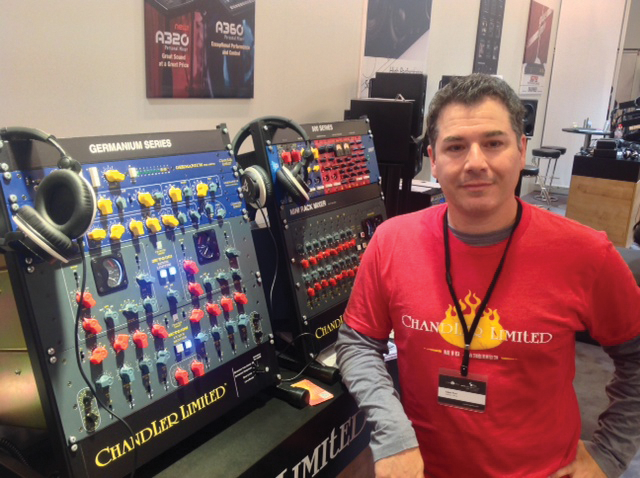
Chandler Audio’s Adam Fiori
MT: Tell us about any legendary users of the original Abbey Road gear using your gear – what feedback have you had?
WG: Oh gosh, do I have to answer that? I don’t want to sound like a tool who is bragging! There are certain users who I get a huge thrill by having them as a client. The biggest honestly was George and Giles Martin who used the gear on the Beatles Love album (along with Abbey Road’s huge collection of vintage gear of course).
I was fortunate to meet them both at the Abbey Road 75th Anniversary party and Giles introduced me to Sir George and Lady Martin. They are wonderfully kind people and that made it even more special.
I’ll never forget on one of my early visits to Abbey Road sitting down to have lunch. As I looked up on the table across from me was George Martin, Giles Martin, and Neil Aspinall (Beatles roadie who later ran Apple for them). They were doing the early work on the Love album as it would turn out. Pretty neat.
Other users I’m proud of? There’s Green Day, Adele, Katy Perry… It’s pretty neat to think that Katy has 1 billion Youtube views and they are listening to her sing through my preamp on every one! Thank you, Dr Luke!
MT: Which production techniques are you most commonly asked about, and why do you think that is?
WG: I get asked about matching preamps to instruments and source a lot – settings for certain instruments and situations. It’s a case-by-case thing of course. Someone wants a pre to match their voice, so we get into questions like, what type of voice do you have? Do you need a brighter preamp or a softer, smoother sound? etc.
Since it’s not always possible to get one to demo in person we do our best to help them make a choice.
We also get questions about mic placement and recording techniques. I’m glad I have lots of engineer friends who have given me titbits of information over the years, and that we have a studio at the workshop where we are always using the gear and listening to the results, so can offer pretty good advice.
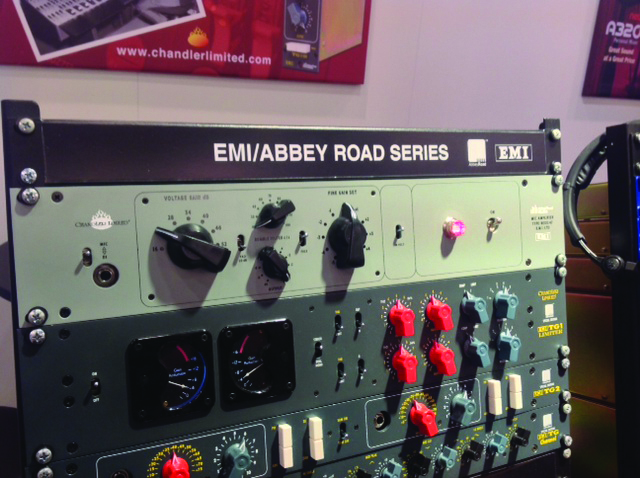
The company’s gear on display at the recent Frankfurt show.
MT: Similarly, what is the biggest production mistake or trend that you hear in music that’s been recorded these days?
WG: I think the biggest problem that we can’t control is where we record. For years I recorded in apartments and living rooms and unless you have a neat old house with wood floors you’re going to fight with it all the time.
I didn’t and I don’t think most people understand the importance of a good sounding space to record in. I think of it as a good learning experience though. If you can make it sound nice then getting into a real space is going to be glorious!
MT:> What advice would you give anyone entering the world of music production?
WG: You have to get in there and do it. If you’re a musician then play out all the time and practise. If you want to produce get the crappiest computer and software you can afford and record everything. There is no substitute for plain old hard work and that will separate you from the others. You never know where life will take you so be open to what’s in front of you.

REDD.47 Mic Amplifier
A recreation of the amps used in Abbey Road’s ultra-rare EMI REDD.51 recording console made between 1959-1968. It processed the mic and line inputs, echo sends and monitors and added a punchy and aggressive character and was used on many Beatles recordings.

The Chandler Limited TG1 Limiter
This recreates the EMI TG12413 used in EMI consoles in the late 60s originally designed to sound like a Fairchild 660/670 but eventually loved for its own sound and used on many classic albums including The Beatles Abbey Road and Pink Floyd’s Dark Side Of The Moon.
MT: What is the future of music production?
WG: A USB socket in my neck so I don’t have to use a mouse any more! Seriously though, obviously digital and plug-ins are a big part of the future but I don’t think analogue hardware will ever go out of style. I just don’t think it will be possible to make a software piece that sounds just like a beautifully designed tube or class A preamp or compressor.
There’s just too much of the real world in those to simulate it in a computer. To me it’s like making a robot and then programming a person’s personality into it and expecting it to be the same. You just can’t replicate that kind of complexity. Don’t get me wrong, though, I think Pro Tools is a godsend…
MT: How would you like to be remembered in terms of your company profile?
WG: Mostly I’d like people to think we were good people who cared about our users. We try to be helpful and serve people who spend their hard-earned money on our products. Oh and maybe that our gear sounded pretty cool!

Curve Bender
This is based on the EQ used in the EMI TG12345 desk with characteristics based on EQs dating back to 1954 with the RS57, the 1969 TG12345, and the 1974 TG12412.

Chandler Zener Limiter
This is based on the vintage EMI circuits and continues the tradition of EMI Limiters started in 1954 with the RS114 tube limiter and the 1968 RS168 Zener Limiter and borrows from both the RS168 Zener Limiter and TG12345 console strip.
MT: Can you reveal any info about any upcoming products you have, Abbey Road related or not?
WG: Well we have quite a few products under development right now and will continue with more after that. What I can say is that they will include the units that people want to see from Abbey Road history as well as some new surprising additions.